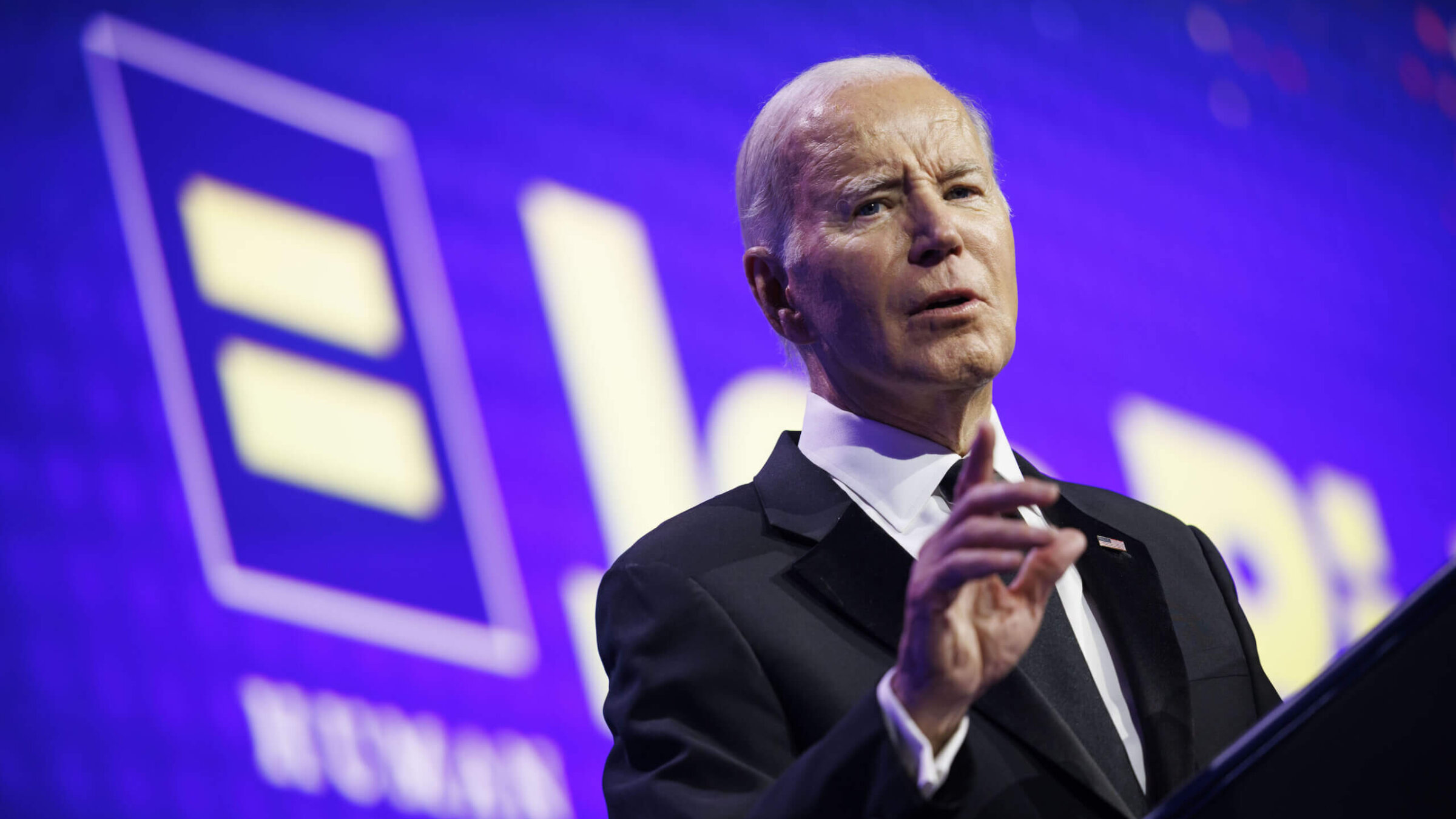Biden’s antisemitism strategy was made for a moment like this
The administration smartly drew from competing definitions to create a broad coalition

President Joe Biden speaks at the Human Rights Campaign national dinner in Washington, D.C., on Saturday. Biden’s strong support for Israel is one of his most deeply held beliefs. Photo by Ting Shen/Bloomberg/Getty Images
Back in May, the Biden Administration released the U.S. National Strategy to Counter Antisemitism, the first systematic action plan from an American president dedicated to combating and eradicating the scourge of Jew-hatred in the country.
It is sad, but perhaps not surprising, that it took fewer than five months for this plan to encounter its first major test. The attack of Hamas terrorists on southern Israel was followed by a secondary trauma. Like a sonic boom following closely behind an explosion, Jews worldwide encountered an ugly scourge of antisemitism.
On college campuses, Jewish students sat in mute horror as some of their classmates blamed Israel for the violence and lauded Hamas for its “historic attack.” At pro-Palestinian rallies, people chanted, “Gas the Jews.” Online, trolls, provocateurs, and terrorist sympathizers raced to amplify misinformation and extoll violence. Synagogues announced heightened security measures, fearing that antisemites would be inspired to terrorize further.
No matter how you define antisemitism, it’s not hard to see how these sickening displays of solidarity with Hamas are antisemitic. All three prominent antisemitism definitions — the one the International Holocaust Remembrance Alliance; the Nexus Document; or the Jerusalem Declaration on Antisemitism — could be used to make that case.
But definitions don’t exist in a vacuum. They are also tools for developing strategies. They underpin the Biden strategy’s focus on “actions to counter antisemitism.”
The architects of the strategy grasped the limitations of relying on a single definition of antisemitism. They acknowledged the prominence of IHRA and its usefulness in helping to identify instances of anti-Jewish hatred and discrimination. At the same time, knowing that IHRA can be used to limit freedom of expression and weaponized against critics of Israeli policies, they recognized that the IHRA definition by itself would not be an effective tool for forging alliances across the broad spectrum of American constituencies and communities.
Instead of yielding to those who demanded that IHRA be adopted as the exclusive definition of antisemitism, the administration chose to incorporate insights from diverse sources, including IHRA, Nexus and other initiatives. In doing so, it rejected the notion that opposition to antisemitism — including antisemitism that uses Israel as its fulcrum — is the province of any one party or ideological camp.
Instead, the strategy laid the groundwork for a true coalition that could unite a wide range of approaches to our country’s Israel policy while being uncompromising in declaring that no legitimate political campaign or movement about Israel can permit the scourge of antisemitism to penetrate its ranks.
The results of this approach, even over the past few days, have been promising. Yes, we’ve seen sickening displays of hateful trolls and bigots cheering the massacre of Jewish children. But we also see rising progressive voices who have emphatically called out that hatred for what it is.
A case in point is the contingent of far-left New Yorkers who hosted an “All Out for Palestine” rally in Times Square last Sunday. When they insisted that true solidarity with Palestinians demands unqualified endorsement of any and all measures taken by Hamas, they were firmly rebuked even by political leaders who have been criticized by some pro-Israel advocates for their support of Palestinian rights.
Though vocal, the cadre of extremists who publicly cheer antisemitic terror finds itself increasingly isolated. Though shaken, the community of Jews and non-Jews who have committed to standing together in solidarity against terror has risen to the moment, forging a stronger and more vibrant bond with each passing day.
Building cross-community solidarity and collective action to counter hate is a pillar of the national strategy on antisemitism. Maintaining it requires careful nurturing, and there is more hard work ahead. The administration, in its wisdom, recognized the need to put a plan in place that encompasses a diverse range of perspectives before a time of reckoning like this one.
The circumstances under which this nascent strategy is being tested are beyond anyone’s worst fears. But it nonetheless offers a ray of hope in the darkest of times: of a public debate free of harassment, violence, and propaganda; of a government committed to rooting antisemitism out wherever it appears; and of a country united against all forms of prejudice, discrimination, and hate.
A message from our CEO & publisher Rachel Fishman Feddersen
I hope you appreciated this article. Before you go, I’d like to ask you to please support the Forward’s award-winning, nonprofit journalism during this critical time.
We’ve set a goal to raise $260,000 by December 31. That’s an ambitious goal, but one that will give us the resources we need to invest in the high quality news, opinion, analysis and cultural coverage that isn’t available anywhere else.
If you feel inspired to make an impact, now is the time to give something back. Join us as a member at your most generous level.
— Rachel Fishman Feddersen, Publisher and CEO